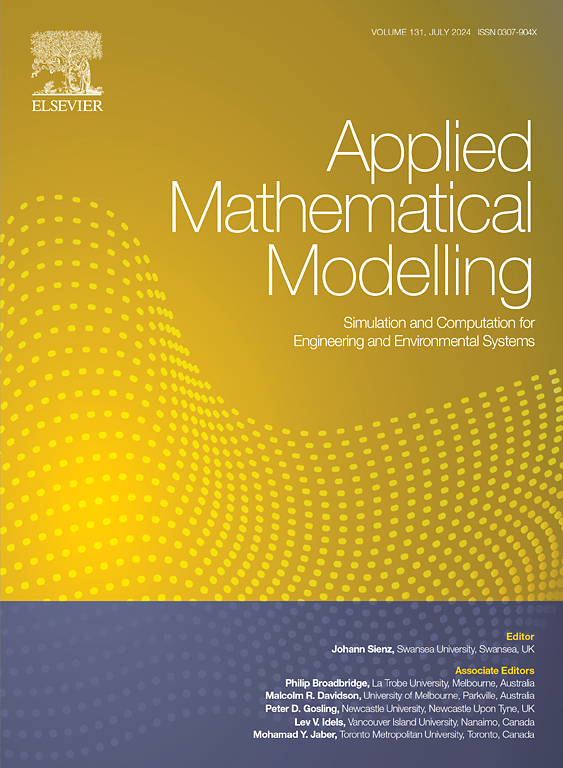Theoretical and experimental investigations on the impact resistance of fiber polymer cylindrical shells with functional gradient protective coatings
IF 4.4
2区 工程技术
Q1 ENGINEERING, MULTIDISCIPLINARY
引用次数: 0
Abstract
A dynamic model of fiber polymer cylindrical shells covered with functional gradient protective coatings (FGCs) is proposed in this work to predict impact characteristics when low-velocity oblique impact loading is considered. The material properties of the FGCs attached to both the inner and outer surfaces of the structures is defined, and the related failure modes and different energy-absorbing mechanisms associated with penetration damage are clarified. Also, by employing the proposed penetration judgement approach based on impact energy, the solution equations are derived to predict the penetrating or non-penetrating dynamic parameters. After constructing the low-speed drop hammer and high-speed gas gun impact systems, detailed tests are conducted to obtain time-history curves of impact forces, force-displacement curves, structural damage areas, and residual impact energies. These results are analyzed for projectiles with different impact velocities and energies. Moreover, these experimental data are compared to the calculated results to fully validate the developed model as well as evaluate the impact resistance of the structure with and without FGCs. Finally, the influence of crucial coating parameters on structural impact resistance is investigated, with several beneficial design suggestions being refined. The dynamic model and solution techniques developed in this work can be readily extended to the impact resistance evaluation of other advanced composite shell structures with coating materials.
具有功能梯度防护涂层的纤维聚合物圆柱壳抗冲击性能的理论与实验研究
提出了一种覆盖功能梯度保护涂层的纤维聚合物圆柱壳的动力学模型,用于预测低速倾斜冲击载荷下的冲击特性。定义了附着在结构内外表面的FGCs的材料特性,阐明了与穿透损伤相关的破坏模式和不同的吸能机制。采用基于冲击能的侵彻判断方法,推导了侵彻与非侵彻动力学参数的求解方程。在构建了低速落锤和高速气枪冲击系统后,进行了详细的试验,获得了冲击力时程曲线、力-位移曲线、结构损伤面积和残余冲击能。这些结果对不同冲击速度和能量的弹丸进行了分析。将实验数据与计算结果进行对比,充分验证了所建立的模型,并对有无FGCs的结构抗冲击性能进行了评价。最后,研究了关键涂层参数对结构抗冲击性能的影响,并提出了一些有益的设计建议。本文建立的动力学模型和求解技术可以推广到其他先进涂层复合材料壳体结构的抗冲击性能评估中。
本文章由计算机程序翻译,如有差异,请以英文原文为准。
求助全文
约1分钟内获得全文
求助全文
来源期刊

Applied Mathematical Modelling
数学-工程:综合
CiteScore
9.80
自引率
8.00%
发文量
508
审稿时长
43 days
期刊介绍:
Applied Mathematical Modelling focuses on research related to the mathematical modelling of engineering and environmental processes, manufacturing, and industrial systems. A significant emerging area of research activity involves multiphysics processes, and contributions in this area are particularly encouraged.
This influential publication covers a wide spectrum of subjects including heat transfer, fluid mechanics, CFD, and transport phenomena; solid mechanics and mechanics of metals; electromagnets and MHD; reliability modelling and system optimization; finite volume, finite element, and boundary element procedures; modelling of inventory, industrial, manufacturing and logistics systems for viable decision making; civil engineering systems and structures; mineral and energy resources; relevant software engineering issues associated with CAD and CAE; and materials and metallurgical engineering.
Applied Mathematical Modelling is primarily interested in papers developing increased insights into real-world problems through novel mathematical modelling, novel applications or a combination of these. Papers employing existing numerical techniques must demonstrate sufficient novelty in the solution of practical problems. Papers on fuzzy logic in decision-making or purely financial mathematics are normally not considered. Research on fractional differential equations, bifurcation, and numerical methods needs to include practical examples. Population dynamics must solve realistic scenarios. Papers in the area of logistics and business modelling should demonstrate meaningful managerial insight. Submissions with no real-world application will not be considered.
 求助内容:
求助内容: 应助结果提醒方式:
应助结果提醒方式:


